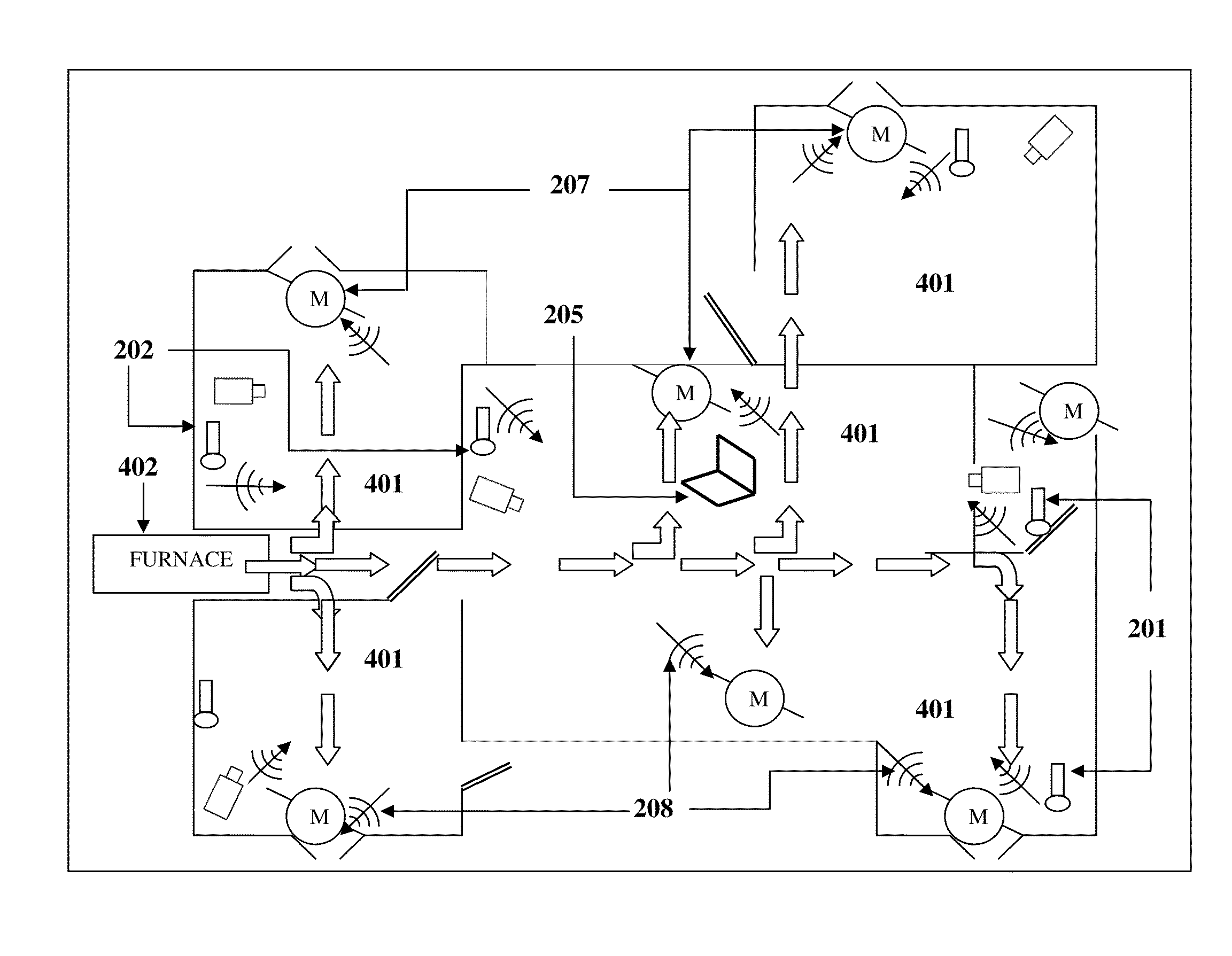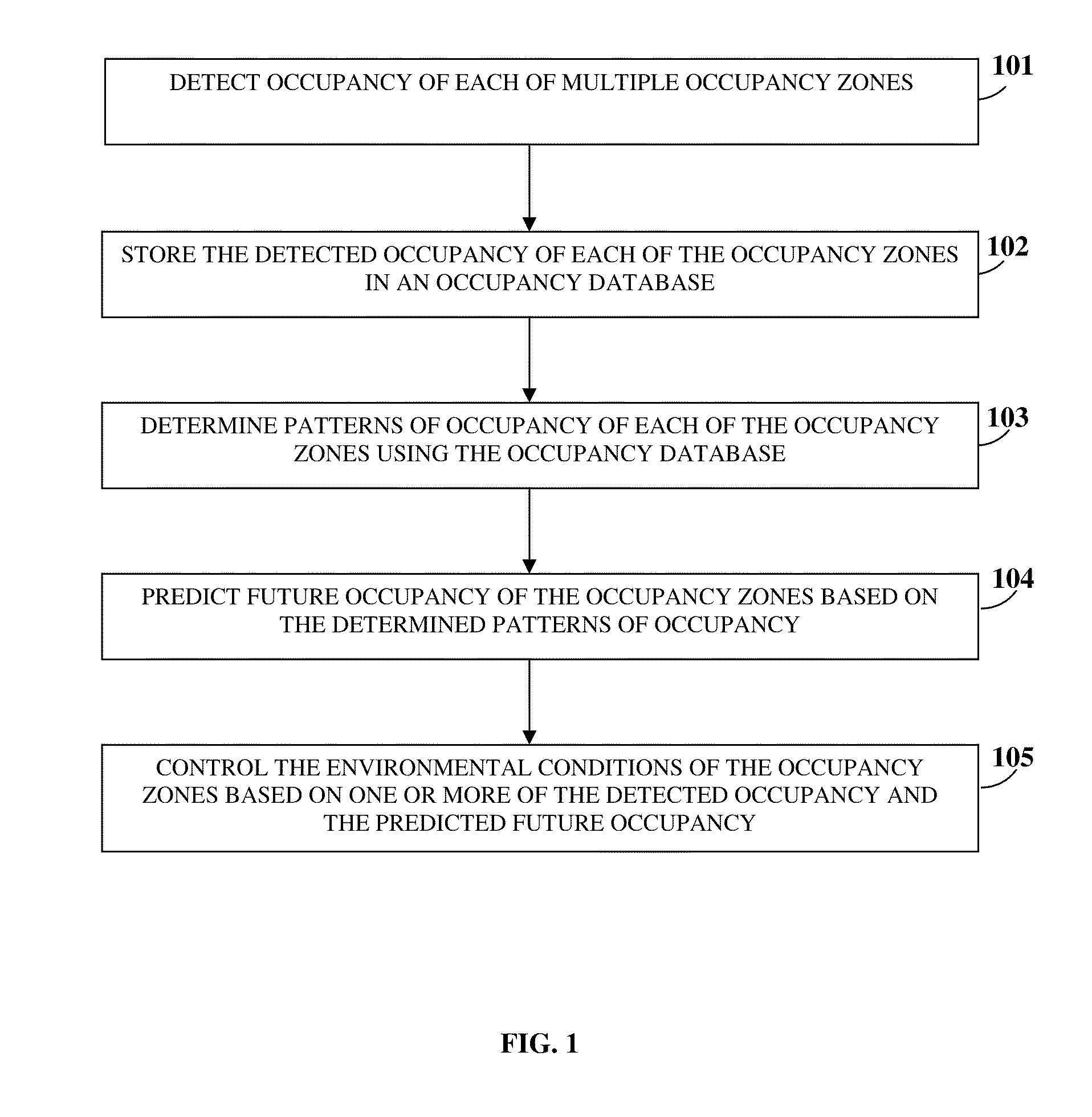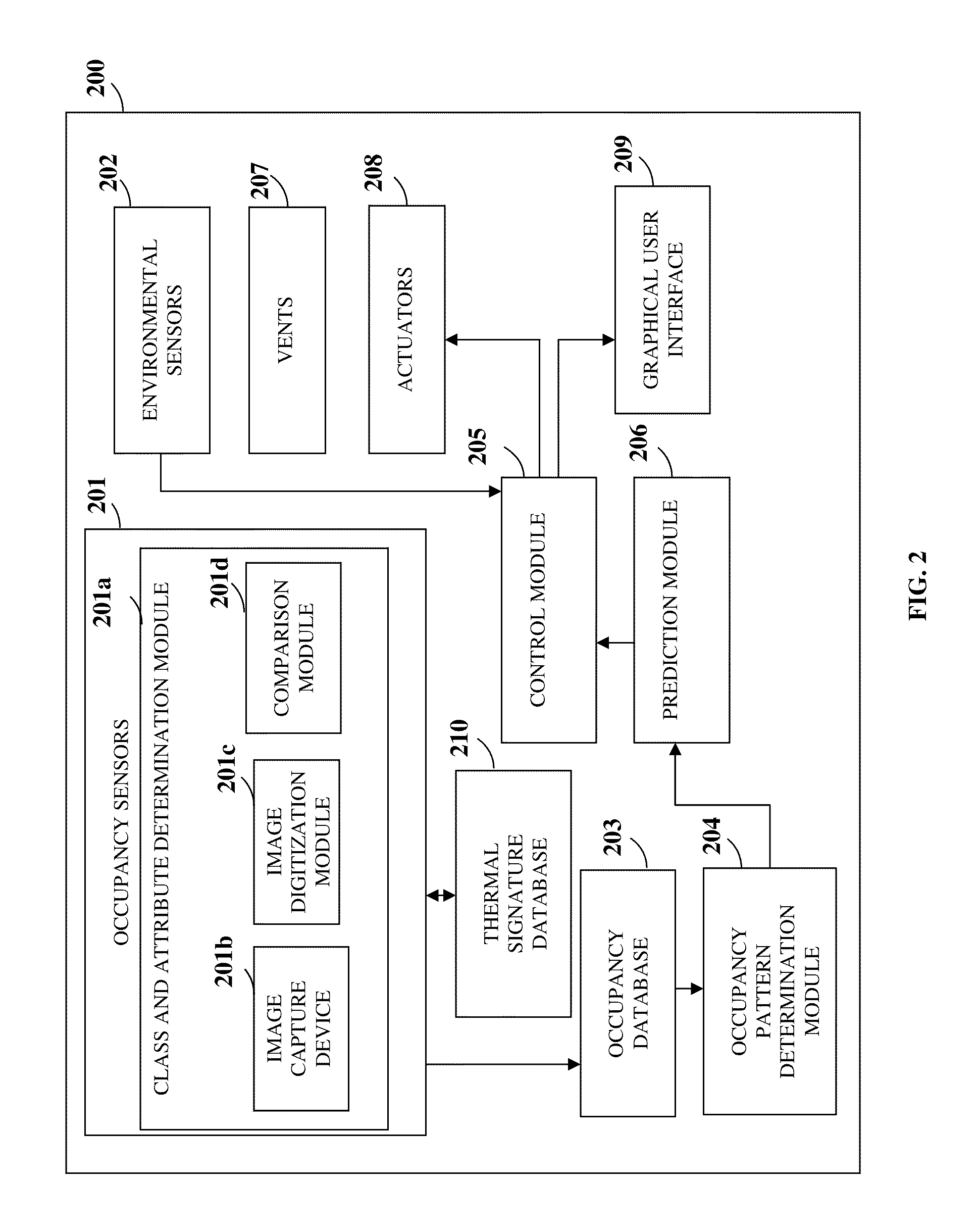Predictive Conditioning In Occupancy Zones
- Summary
- Abstract
- Description
- Claims
- Application Information
AI Technical Summary
Problems solved by technology
Method used
Image
Examples
Embodiment Construction
[0025]FIG. 1 illustrates a method for predictively controlling environmental conditions of multiple occupancy zones in an occupancy space. As used herein, “occupancy space” refers to an enclosed space that may be occupied by animate or inanimate occupants. A single occupancy space may be divided into two or more occupancy zones. For example, if a building space comprising multiple rooms is considered an occupancy space, each of the rooms in the building may be considered an occupancy zone. In another example, a large hall may be considered an occupancy space and multiple areas thereof may be considered as occupancy zones. The occupancy spaces and the occupancy zones may be enclosed indoor spaces or physically unbounded outdoor spaces.
[0026]Also, as used herein, “occupant class” refers to the general class of an occupant, for example, whether the occupant belongs to the animate class, inanimate class, human class, or non-human class. Furthermore, as used herein, “attributes of an occ...
PUM
 Login to View More
Login to View More Abstract
Description
Claims
Application Information
 Login to View More
Login to View More - R&D
- Intellectual Property
- Life Sciences
- Materials
- Tech Scout
- Unparalleled Data Quality
- Higher Quality Content
- 60% Fewer Hallucinations
Browse by: Latest US Patents, China's latest patents, Technical Efficacy Thesaurus, Application Domain, Technology Topic, Popular Technical Reports.
© 2025 PatSnap. All rights reserved.Legal|Privacy policy|Modern Slavery Act Transparency Statement|Sitemap|About US| Contact US: help@patsnap.com



